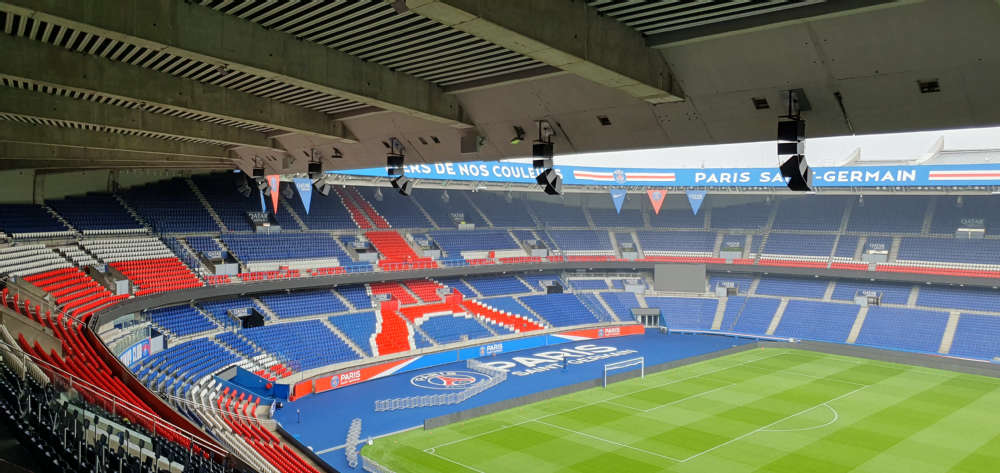
Since its construction in 1897, the Parc des Princes has become an emblematic place for French sport, located in the 16th arrondissement of Paris. Historically rich, this stadium has undergone several phases of renovation, notably that of 1972 which marked its current configuration. With a capacity of up to 55,000 visitors, it hosts numerous sporting events, including Paris Saint-Germain football matches, as well as concerts and large-scale events.
As part of the latest modernization of the sound system, a major technical installation was implemented by TOA, combining acoustic performance and safety standards. The system is based on an infrastructure made up of 13 bays of 36 units each, integrating various control, mixing and amplification equipment.
Key components:
• SX-2000SM system manager for centralized supervision,
• SX-2100AI audio matrices for input management with DSP processing and Cobranet connectivity,
• SX-2100AO output matrices for audio signal distribution,
• VP-3154, VP-3304 and VP-3504 amplifier for speaker power,
• VP-2064 amplifier and VP-2421 amplifier for specific applications,
• Nexo NX-amp4x4 amplifiers for powering low impedance subwoofers,
• VX-3000DS safety power supplies, ensuring continuity of service in the event of an interruption of the main power supply.
The loudspeaker system is made up of 39 clusters integrating 117 Alpha 7530EN loudspeakers and 39 B1-15 subwoofers, designed for high-quality sound delivery and optimal stadium coverage. In addition, the installation includes various PC-1867FC in-wall speakers, BS-680FC wall-mounted speakers, as well as various models of sound projectors and speakers for different specific applications.
This technical installation ensures clear and powerful sound diffusion throughout the stadium, while meeting strict safety requirements thanks to EN 54 certifications of the equipment used. The implementation of this complex architecture illustrates the commitment to providing professional sound solutions, capable of adapting to the specific challenges of large sports infrastructures.